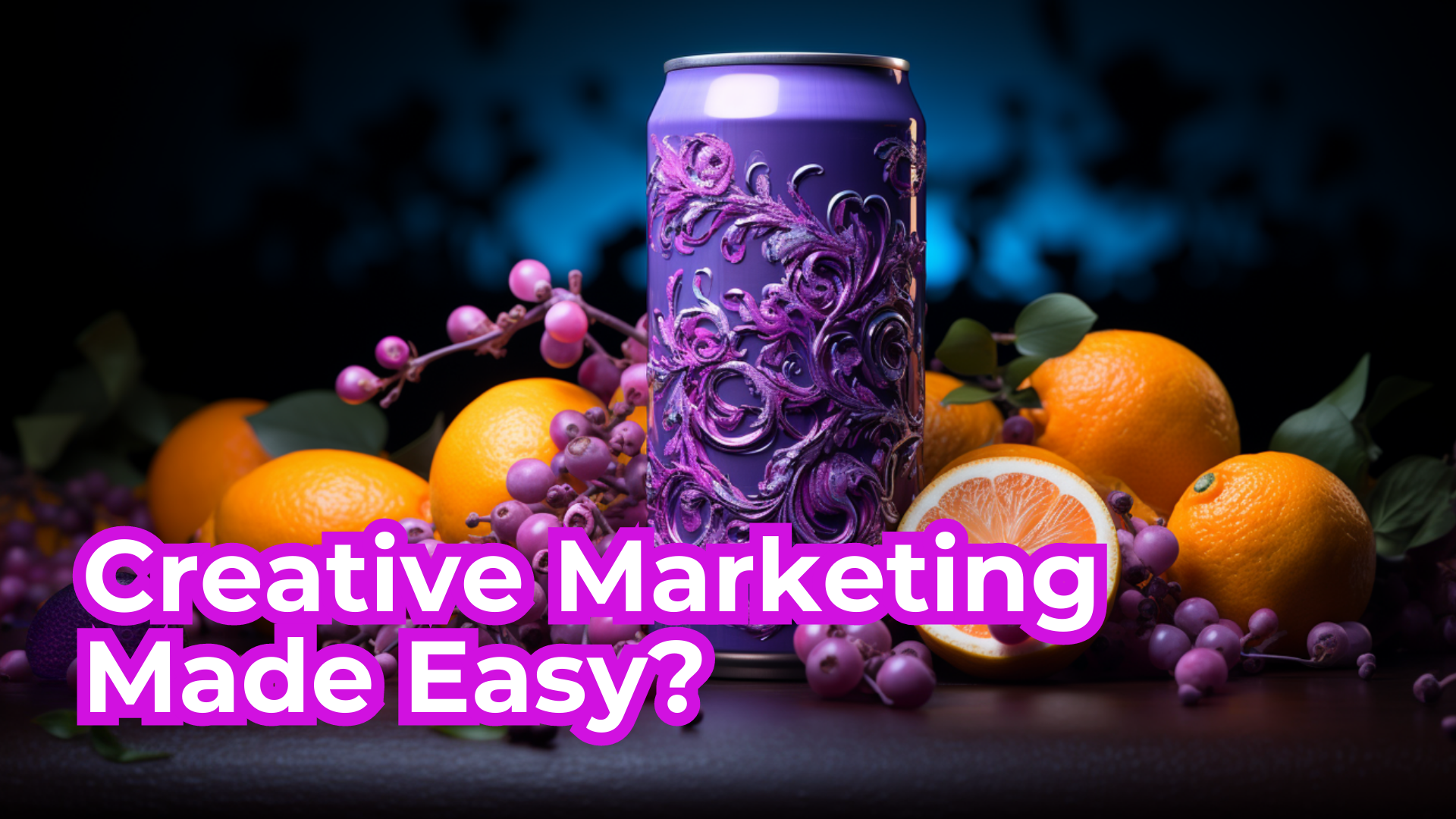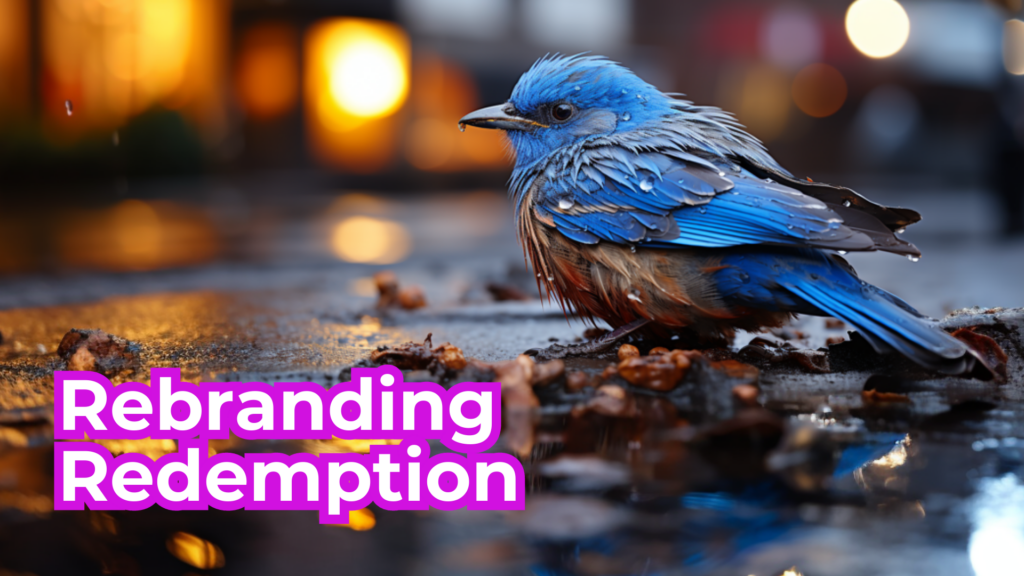Gorgeous beverage packaging. Great photography and food styling. That creative work must have cost a fortune to shoot. Except it is not. It’s not even real, and nothing in that photo exists in real life. It’s conjured up in a marketer’s mind working for a small company planning to launch a new artisan fruit soda.
In this article, we delve into the dynamic world of AI-powered marketing campaigns and explore how small and medium-sized businesses can harness the potential of artificial intelligence to create extraordinary and unforgettable brand experiences. From identifying unique selling propositions to incorporating augmented reality and interactive elements, we’ll take you on a journey of creativity, innovation, and success in the digital age.
Introduction: Where Creativity Meets Technology
In today’s fast-paced and digitally driven world, standing out from the competition requires businesses to think outside the box and embrace the transformative power of AI in their marketing strategies. Traditional marketing alone can no longer guarantee success; instead, companies need to be inventive, interactive, and inspiring in their campaigns. Leveraging AI enables businesses to create campaigns that not only engage their audience but also leave a lasting impact. Join us as we uncover the steps to designing amazing AI-driven creative campaigns for small and medium-sized businesses.
1. Unveiling the Unique Selling Proposition (USP)
Every successful campaign starts with a solid foundation—the Unique Selling Proposition (USP). Understanding what sets your business apart from the rest is crucial. AI can play a significant role in analysing market trends, consumer behaviour, and competitor strategies, enabling you to discover your USP with precision.
When it comes to identifying your USP, data analysis takes centre stage. AI-powered tools can process vast amounts of information, turning raw data into valuable insights. By conducting sentiment analysis, keyword research, and competitor analysis, you can identify gaps in the market, consumer pain points, and unique features that resonate with your target audience.
Real-life example: A local bakery discovered through AI-driven sentiment analysis that their gluten-free and vegan offerings garnered a substantial positive response, leading to a unique “Guilt-Free Delights” campaign that resonated with health-conscious customers. The campaign featured visually stunning AI-generated content showcasing mouth-watering delicacies and customer testimonials, ultimately boosting foot traffic and online orders.
2. Crafting Compelling Content and Storytelling with AI
Content and storytelling are the heart of any marketing campaign. As a small to medium-sized business, creating high-quality content consistently can be challenging. However, AI-generated content has evolved to be not only coherent but also creative and captivating. Embrace AI writing assistants (the operative word here is ‘assistants’) that can generate personalised messages, engaging blog posts, and social media content that sparks curiosity and drives action. But don’t be fooled; you will still need field expertise, creativity, and analytical skills to craft great content. AI alone can’t do that.
AI-generated content extends beyond text. With advancements in Natural Language Processing (NLP) and machine learning, AI can now create compelling videos, interactive infographics, and captivating visuals. These multimedia elements can enhance your campaign’s storytelling and bring your brand to life.
Incorporate user-generated content (UGC) in your AI-driven campaigns. UGC adds authenticity and social proof to your brand. AI can help you identify and amplify the most impactful UGC, allowing your customers to become brand ambassadors.
User case: A fashion start-up used AI-generated personalised style recommendations to offer a tailored shopping experience for customers, leading to a surge in repeat purchases and word-of-mouth marketing. Additionally, by encouraging customers to share their outfits on social media using a branded hashtag, the company collected valuable UGC and amplified it through AI-generated content, creating a sense of community among their fashion-conscious audience.
3. Immersive Storytelling with Augmented Reality (AR)
To captivate modern audiences, businesses need to immerse them in compelling stories. Augmented Reality (AR) opens new dimensions of creativity by blending the physical and digital worlds. With AR-powered campaigns, you can invite customers to interact with your products and brand like never before.
AR experiences can take various forms, from interactive virtual try-ons for fashion and cosmetics to virtual tours of real estate properties. By enabling customers to experience products or services virtually, you eliminate the uncertainty that accompanies online shopping, building trust and engagement with your brand.
Example: A tourism agency utilised AR technology to offer virtual tours of exotic destinations, inspiring wanderlust and boosting bookings for upcoming travel packages. Customers were transported to breathtaking beaches, ancient ruins, and bustling cities—all from the comfort of their homes. This immersive experience sparked their desire to explore the world, resulting in increased bookings for the agency.
4. Personalisation: AI as a Customer Whisperer
Customers crave personalised experiences, and AI is the ultimate customer whisperer. Use AI algorithms to analyse customer data and preferences, enabling you to deliver tailored recommendations and offers that cater to individual tastes.
Personalisation can manifest across various touchpoints, from personalised email marketing to dynamic website content. By understanding your customers’ preferences and purchase history, you can recommend products and services that align with their interests, increasing the likelihood of conversion.
Real-life case study: An online bookstore leveraged AI-powered recommendation engines to suggest books based on customers’ reading histories, resulting in increased sales and improved customer satisfaction. The AI-powered recommendation system accurately predicted customers’ literary preferences, presenting them with a curated selection of books that resonated with their tastes.
5. Gamification: Turning Customers into Players
Games have a unique ability to engage and motivate people. By incorporating gamification elements into your campaigns, you can turn customers into active participants, boosting brand loyalty and retention.
Gamification elements can be as simple as quizzes, polls, and contests or as complex as virtual scavenger hunts and leader board-based challenges. As customers interact with your brand through gamified experiences, they become more invested in the outcome, fostering a sense of excitement and achievement.
Case study: A fitness app introduced challenges, rewards, and leader boards powered by AI to encourage users to achieve their fitness goals, leading to a surge in app engagement and social sharing. Users competed against friends and peers, earning badges and rewards for completing milestones. The AI-powered gamification features significantly increased user retention and loyalty, turning fitness into a fun and social experience.
6. Harnessing AI Chatbots and Callbots for 24/7 Support
Customer service is a key differentiator for businesses. Implement AI-powered chatbots or callbots that provide instant and personalised assistance, ensuring your customers feel valued and supported around the clock. Did anyone see the Tesla callbot on a call with a potential customer and book him a test drive?
AI chatbots can handle common customer queries, provide product recommendations, and guide customers through the purchase process. By addressing customer concerns promptly, you not only improve customer satisfaction but also free up your human support team to focus on more complex issues.
Real-life use case: An e-commerce store integrated AI chatbots to handle common customer queries, leading to a reduction in response time and an increase in customer satisfaction. The chatbots used Natural Language Processing (NLP) capabilities to understand and respond to customer enquiries, providing efficient and accurate support.
7. Navigating Social Media with AI Insights
Social media platforms are bustling marketplaces with vast amounts of data. AI-powered social media analytics tools can help you understand your audience’s sentiments, preferences, and behaviours, enabling you to tailor your campaigns accordingly.
AI analytics tools can track brand mentions, monitor sentiment, and analyse engagement metrics across social media platforms. By tapping into these insights, you can fine-tune your content strategy, optimise posting times, and create content that resonates with your target audience.
User example: A pet store analysed AI-generated sentiment reports to identify the most popular pet trends and launched a successful “Pet of the Month” campaign, encouraging customers to share their furry friends’ photos. The campaign sparked excitement among pet owners, generating a viral buzz and a significant increase in social media followers.
8. Virtual Reality (VR) Events: Embracing the New Norm
The COVID-19 pandemic reshaped how we experience events. In-person gatherings became limited, and businesses had to find innovative ways to connect with their audience. VR technology emerged as a game-changer, allowing businesses to host virtual events that are interactive, immersive, and accessible from anywhere in the world, providing a memorable experience for attendees.
Virtual reality events can take various forms, from virtual conferences and trade shows to product launches and brand activations. With VR, attendees can explore lifelike virtual environments, interact with digital exhibits, and network with other participants—all from the comfort of their homes.
Case study: A tech conference adopted VR technology to create a virtual expo hall, networking lounges, and keynote presentations, resulting in a higher global attendance rate and expanded reach. Attendees were able to engage with exhibitors, chat with industry experts, and access on-demand content, creating an inclusive and interactive event experience.
9. Measuring Success: AI Analytics and Beyond
As the saying goes, “What gets measured gets managed.” AI doesn’t just power your campaigns; it also equips you with in-depth analytics to measure success. Analysing campaign data, customer interactions, and sales patterns with AI can provide valuable insights that inform data-driven decision-making for future campaigns.
AI analytics can track key performance indicators (KPIs) such as conversion rates, click-through rates (CTR), customer lifetime value (CLV), and return on investment (ROI). These metrics help you understand campaign effectiveness, identify areas for improvement, and optimise your marketing efforts.
Furthermore, AI can assist in predictive analytics, anticipating customer behaviour and market trends. This foresight allows you to stay ahead of the competition and proactively tailor your marketing strategies to meet evolving consumer needs.
Example: A toy manufacturer utilised AI-powered predictive analytics to forecast demand for their latest toy line, preventing overstocking and maximising profits. The AI algorithms analysed historical sales data, market trends, and seasonal patterns to accurately predict demand, ensuring the right products were available at the right time.
Conclusion: A Brave New World of AI-Infused Creativity
The marriage of creativity and AI has unlocked unprecedented possibilities for small and medium-sized businesses. From discovering your unique selling proposition to embracing immersive technologies and leveraging AI insights, AI-powered campaigns offer the chance to connect with your audience on a deeper, more meaningful level.
By incorporating AI into your marketing strategy, you can create campaigns that not only engage but also resonate with your target audience. Whether it’s through personalised content, immersive experiences, or interactive elements, AI can enhance your ability to captivate and delight customers.
So, venture into this brave new world of AI-infused creativity and watch your business thrive like never before. Embrace AI as a powerful ally, fuelling your marketing efforts and propelling your brand to new heights.








